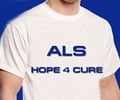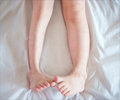Amyotrophic Lateral Sclerosis (ALS), is a neuromuscular disease that causes degeneration of voluntary muscles and nerves. World famous physicist, Stephen Hawking was the longest survivor of the condition in history.
- Stephen Hawking affected with Amyotrophic Lateral Sclerosis (ALS) was the longest, surviving patient with ALS in history
- Amyotrophic Lateral Sclerosis (ALS) is a neuromuscular disease that causes degeneration of voluntary muscles and nerves
- Currently, there is no cure for ALS, and no effective treatment to stop or reverse, the progression of the disease
He lived a life of dignity and extraordinary achievement for 53 more years.
Hawking spent 30 years as a Mathematics Professor at the University of Cambridge and was the Director of research at the school's Center for Theoretical Cosmology.
Amyotrophic Lateral Sclerosis (ALS), a neuromuscular disease is a rapidly progressive and fatal disease. ALS causes degeneration of voluntary muscles and nerves of the body. Voluntary muscles help in chewing, walking, and talking. Often, ALS begins with muscle twitching and weakness in a limb or slurred speech
ALS is called Lou Gehrig's disease, named after the famous American baseballer who died of ALS in 1941 at age 37. ALS is also referred to as Maladie de Charcot, and Motor Neurone Disease (MND).
Currently, there is no cure available for ALS, and there is no effective treatment to halt or reverse, the progression of the disease.
Symptoms of Amyotrophic Lateral Sclerosis
In three-fourths of those with ALS, either the limb or hand may be affected first and later spreads to other parts of the body. Patients are unaware of the symptoms, as the onset of the disease is subtle.Early signs and symptoms include:
- Difficulty in walking
- Tripping and falling
- Weakness in leg, feet or ankles
- Weakness or clumsiness in hands
- Slurred speech
- Muscle atrophy
Causes and Risk Factors of Amyotrophic Lateral Sclerosis
Scientists are still researching the exact cause of ALS, although there are a plethora of factors, such as gene mutation, chemical imbalance, disorganized immune response, and protein mishandling.Around 5 to 10 percent of all ALS cases are inherited, while the rest have no known cause. The risk factors for ALS include the following:
- Age - People who are between 40 and 60 years are at a higher risk of ALS
- Sex- Men are more affected than women
- Surgeries related to spinal cord could also damage nerve fibers and can cause ALS
- Exposure to neurotoxins, heavy metals or viruses could also be the trigger factors
- Individuals in the military have a 60 percent increased chance of developing the disease
Diagnosis of Amyotrophic Lateral Sclerosis
Diagnosing ALS is difficult, as the symptoms resemble other neurological conditions. Diagnostic tests need to be conducted to rule out other nervous disorders that resemble ALS. Some of the tests include:- Electromyography (EMG)
- Nerve conduction velocity (NCV)
- Magnetic resonance imaging (MRI)
- Spinal tap or lumbar puncture
- Muscle biopsy
- Blood and urine tests
Treatment and Management of Amyotrophic Lateral Sclerosis
So far, a specific cure is not available for ALS. Hence, the treatment is focused mainly on slowing down the progression of the disease and making it manageable.- The Food and Drug Administration (FDA) approved the very first drug riluzole (Rilutek) to minimize motor neuron damage.
- Physical therapy encourages the patient to do simple, low-impact exercises like walking, swimming, or stationary bicycling.
- Speech therapy is recommended for patients as communication becomes increasingly difficult with disease progression.
- Caregivers of ALS patients need to prepare small nutritious meals that can be at various intervals to the patient throughout the day.
- Suction devices help remove excess fluid or saliva from the patient to prevent choking.
- Nocturnal ventilatory support will be used to inflate the lungs and help the patient to breathe while sleeping.
Reference:
- Amyotrophic Lateral Sclerosis (ALS) Fact Sheet - (https://www.ninds.nih.gov/Disorders/Patient-Caregiver-Education/Fact-Sheets/A myotrophic-Lateral-Sclerosis-ALS-Fact-Sheet)
- ALS: Amyotrophic Lateral Sclerosis - (https://www.mda.org/disease/amyotrophic-lateral-sclerosis/signs-and-symptoms)
- About ALS - (http://www.alsa.org/about-als/)
- Lou Gehrig's Disease? (ALS) - (https://kidshealth.org/en/kids/als.html)










